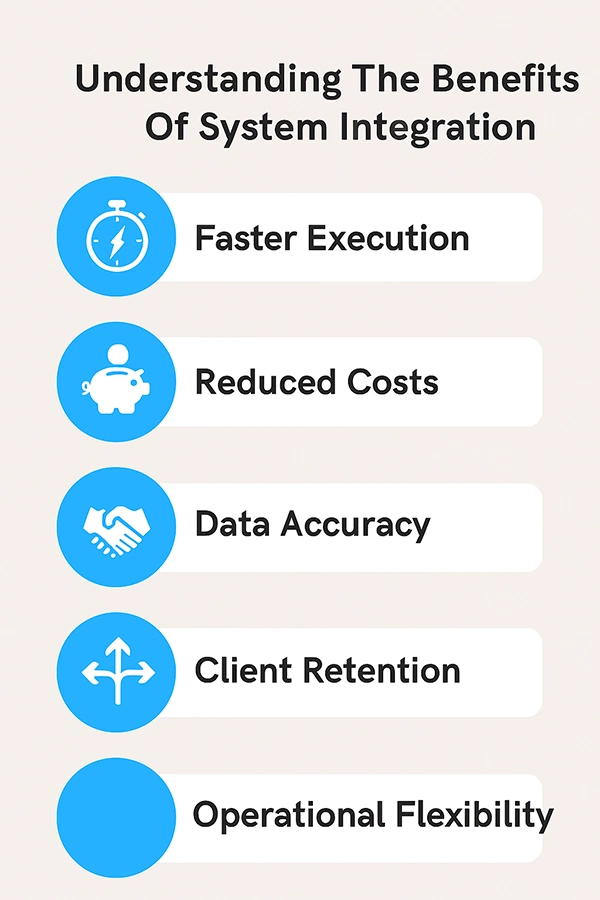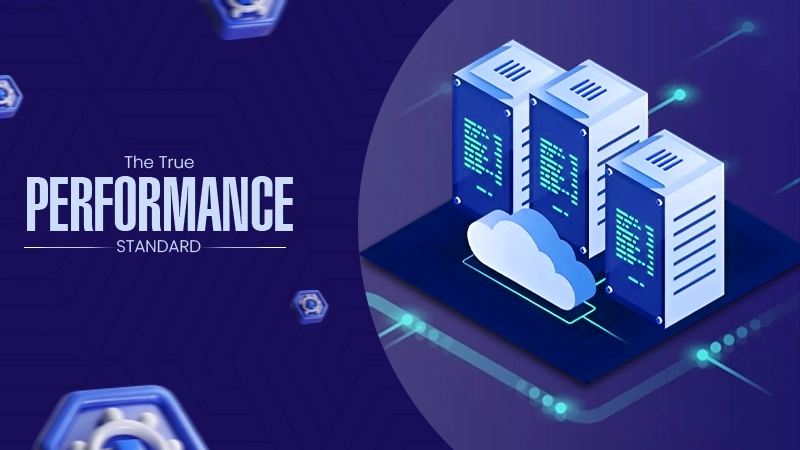Integration eliminates the manual work, enhances accuracy, and provides the best client insights on one system.
KEY TAKEAWAYS
- Integrating CRM and accounting boosts efficiency and reduces manual work.
- Choose tools that support seamless, secure, real-time financial data syncing.
- Customize workflows to reflect your advisory firm’s unique operational needs.
- Set clear user permissions to protect sensitive financial and client data.
A global customer relationship management (CRM) software report by Grand View Research, released in 2023, predicts that the CRM market will be valued at $163.16 billion by 2030. This prediction is mainly due to increased usage of CRM (and CRM platforms) by financial advisors and accountants.
Integrating a client relationship system with your accounting system provides financial professionals with a proper workflow. Using both systems improves quality of care, quality of work due to less manual effort, and provides a much, much better level of insight into client views and preferences.
In this article, we will attempt to demonstrate the integration of the two greatest improvement opportunities, leading to fewer errors, better financial decisions, and fewer errors, all without changing your customer intermediary.
Understanding The Benefits Of System Integration
By combining advisor relationship management systems with accounting systems, advisors now have access to a central relationship data suite as well as financial information. This setup allows advisors to view client profiles and payment histories together, offering a complete, unified perspective for better financial understanding.
Rather than making the switch between platforms or asking the accounting team to make the reports, all the required information will be available instantly. This integration also enhances your internal processes, making team collaboration and data management more streamlined and effective. Financial insights and client communications will have a greater presence on one screen, and therefore work better as a team.
It boosts productivity while also enhancing compliance through better documentation and more reliable audit tracking across both systems. With CRM, those who experience it do so in order to make the advisory process data-driven, and where one can easily trace what is going on. Below, you can see the major benefits of system integration.

Preparing Both Systems For Integration
Before merging CRM and accounting systems, it’s important to assess their compatibility to ensure smooth and effective integration. Not every system has native integrations, so you can resort to third-party tools or work with APIs in order to fill the gap.
The most effective CRM software packages have inbuilt support for, among others, the most common accounting platforms, which saves on time and resources. Some elements involved in system preparation are checking your data structure, removing unneeded records, and ensuring compatibility between platforms.
Successful integration depends on consistent naming conventions, standardized contact information, and matching identifiers like client IDs across both systems. Preconfiguration will reduce the number of sync errors and guarantee that the connection is hassle-free initially.
Choosing The Right Tools And Platforms
Selecting software that integrates easily and securely is essential for a smooth and reliable system connection. Financial advisors must look at the CRM systems that can work with accounting software like QuickBooks, Xero, or Sage.
The ability to actively use the linkage of CRM information with the financial information is now provided on many of the available CRM providers. It can be set up with minimal technical effort or with help from a provider skilled in financial data migration.
Financial professionals can find the best CRM software to has automation tools on it and allows variations of workflows, real-time syncing features, etc. This also means that when a payment is noted or an invoice is made, the information is instantly taken to the CRM. Advisors have precise statistics, follow-ups, and improved financial analysis on the whole client network.
Setting Up Permissions And User Access
When it comes to linking sensitive financial data with a CRM, data security and access control should be considered. Establishing user permissions is crucial—only authorized team members should access or modify accounting data within the CRM system.
This minimizes the chances of misplaced activities and safeguards information that may be classified as secret. Defining clear roles and responsibilities is essential for effectively managing and maintaining the integration process.
This can be done when a member of staff or an outside expert is designated to observe the sync and fix problems that may occur, as well as make sure the systems can still communicate. With a well-defined structure, the integration process remains secure and poses no additional risk to your business operations.
Customizing Workflows To Match Advisory Needs
Every financial advisory firm operates differently, so the integrated system should be tailored to align with your specific workflows and needs. This could involve the creation of custom fields in the CRM to record particular financial information, or the establishment of automated tasks based on the basis of accounting alerts.
As a simple example, you may need to automatically respond to an overdue invoice to a particular client. This level of customization empowers advisors to act quickly and respond effectively to client needs and financial changes. It also enables companies to optimize their client service tactics, with on-the-spot facts and figures to inform a planning discussion, meeting schedule, or investment suggestions. It is even more useful when CRM for financial advisors is based on the current financial well-being of clients.
Maintaining Integration And System Updates
Once installed, the integration implemented needs to be maintained, which can be achieved through occasional or regular maintenance. Frequent updates from CRM and accounting software providers can sometimes cause compatibility issues between the two systems.
This is to be noted that the performance of integration should be strictly tracked and be ready to adjust when the systems change. Regular audits of the data exchange are also noteworthy.
Regular checks help maintain synchronization, prevent duplicate records, and ensure vital data like balances and payment statuses stay accurate and up to date. With proactive maintenance, advisors will ensure that they can depend on their systems to supply reliable insight at any given time.
Training Staff To Use The Integrated System
An integrated system is only effective if your team knows how to use it correctly.
Employees should be trained not only concerning the technical process, but also concerning the use of the integrated data in their daily tasks.
All of them need to know how to communicate with the integrated platform, whether they are reporting, attending a client meeting, or need to issue billing. This training increases the rate of adoptions and assists in restoring the consistency of handling data. It also makes your team secure in the system, which will lessen the delay, and the return on investment will be maximized.
As a company with intelligent users and an effectively designed procedure, your company would also be able to provide quicker, wiser, and more personalized service.
Conclusion
Syncing your accounting system with advisory CRM software creates a foundation for smoother operations and enhanced client service delivery. Combining financial information and client communications, advisors are capable of reducing the amount of manual efforts and enhancing the accuracy of data, as well as getting a better understanding of the entire financial picture of each client.
Regardless of the size of the working team or the scope of your portfolio, selecting the most appropriate CRM software along with a financial integration option can help redefine the work in your business. The key to realizing this integration, then, is to plan ahead, customize the process, and train those affected to reap long-term returns that facilitate such positive growth, compliance, and client feelings of fulfillment.
- Understanding The Benefits Of System Integration
- Preparing Both Systems For Integration
- Choosing The Right Tools And Platforms
- Setting Up Permissions And User Access
- Customizing Workflows To Match Advisory Needs
- Maintaining Integration And System Updates
- Training Staff To Use The Integrated System
- Conclusion






